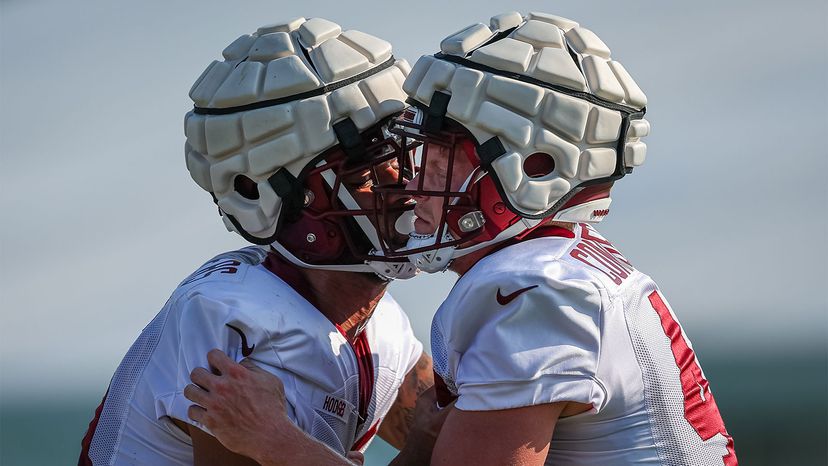
If your favorite NFL defensive lineman looked a little, uh, top heavy during 2022 training camp and early preseason, it's probably because he was. After reviewing several years of data and lab tests, the NFL mandated the use of Guardian Caps — soft shell helmet covers — by all offensive linemen, defensive linemen, tight ends and linebackers through the second game of preseason.
The addition of Guardian Caps, even in practice, is a significant improvement to helmet design and one that could make a measurable difference in the number and severity of concussions. Concussion is a leading contributor to chronic traumatic encephalopathy (CTE), a progressive brain disorder believed to be caused by repeated trauma to the head. It can manifest through symptoms such as depression, anxiety, memory loss and dementia. The Guardian Cap reduces impact up to 33 percent in laboratory testing, but that number reflects the slower speed and less forceful impact of the youth/high school game.
Advertisement
According to NFL data, impact force is reduced by at least 10 percent when an NFL player is wearing a Guardian Cap. The number is doubled if both players in a collision are wearing caps — though that figure comes from testing data, not from on-field play.
Still, it's significant when you're talking about two very beefy men crushing their heads into each other with little more than a layer of thick plastic covering their domes. But it's also significant to a sport that wants to do more to promote the long-term health and safety of its players. In 2015, there were 275 concussions, including 83 during the preseason. Thanks to changes in concussion protocols, in 2021 there were 187 concussions with only 52 during the preseason.
Erin and Lee Hanson, Guardian Cap's designers, first created a fully encompassed soft-shelled helmet. But football executives didn't like the look or the sound of the helmet. So, the designers shifted their focus to a practice cap, the removable Guardian Cap. In 2012, Clemson University's football team began wearing the Guardian Cap in practice and eventually more than 200 other colleges and 2,000 high schools joined them.
In 2017, Guardian Innovations won $20,000 in an R&D challenge from the NFL, the HeadHealthTECH award, to develop new and improved helmets and protective equipment. Guardian redesigned the helmet covers to fit NFL helmets. After further tests in the lab and on the field, in 2021 Guardian Caps were spotted in several pro camps.
But why wear the Guardian Caps in practice and not in games? And why these players? Why aren't all players required to wear the practice caps?
Simple: Players take many more hits during training camp than during a game, and certain players — defensive and offensive linemen in particular — bear the brunt of those hits. However, the NFL plans to check their assumptions with cold, hard data. Around 100 players, some wearing Guardian Caps and some not, are wearing mouthguards with sensors that will measure the impact of the hits the player takes. The league will be able to compare the impacts experienced by players wearing the Guardian Cap with those without the cap.
Though some folks may call these puffy helmets the further "sissification" of sports, (right up there with shin guards and athletic cups, no doubt), one player, New York Giants offensive lineman Shane Lemieux is grateful, telling The Athletic, "I love that the NFL is doing research to help protect us more ... because this game means the most to me, but at the end of the day, I want to walk away healthy."
Advertisement